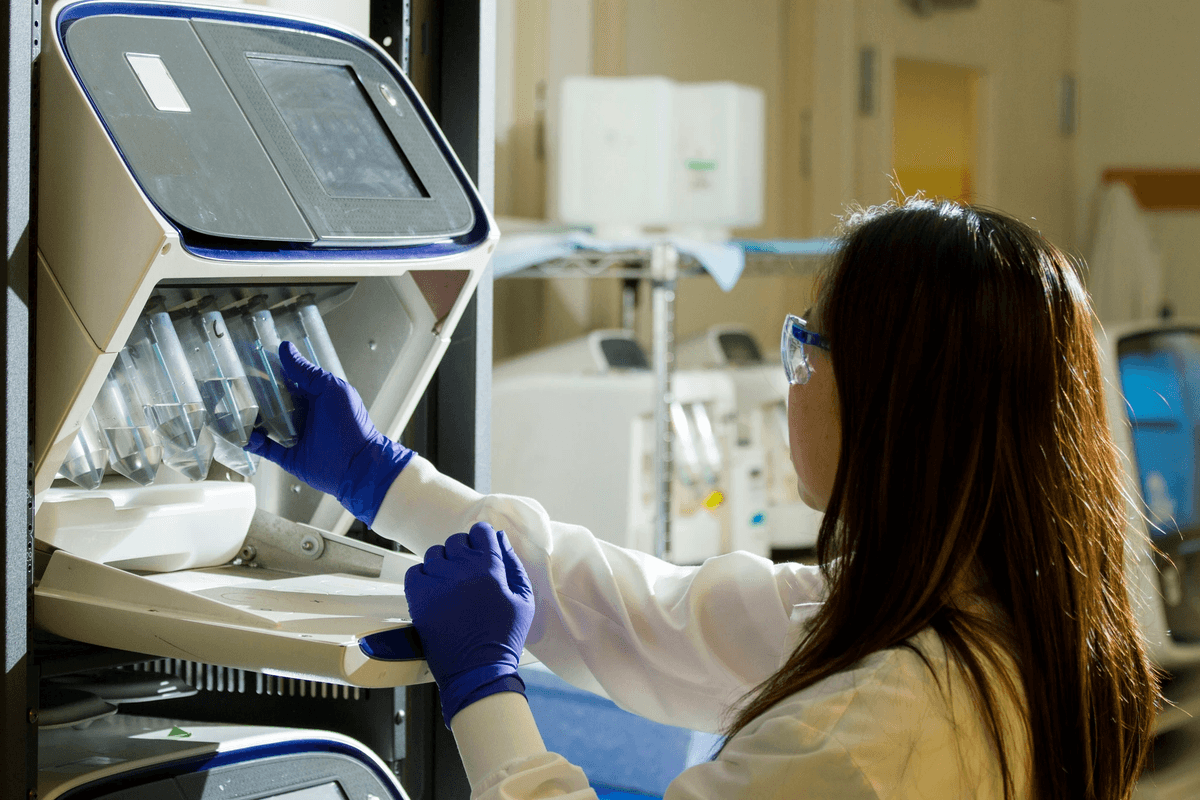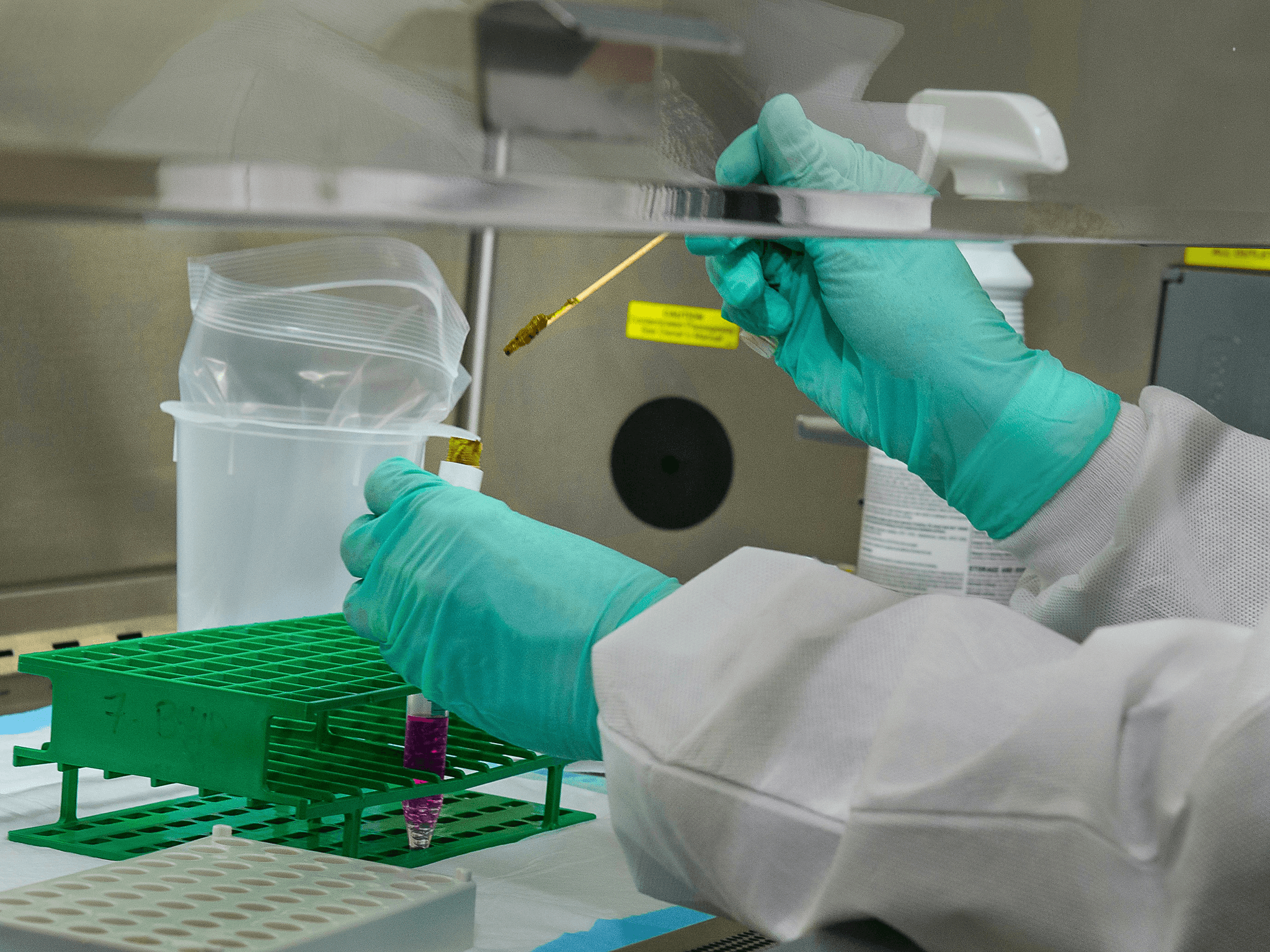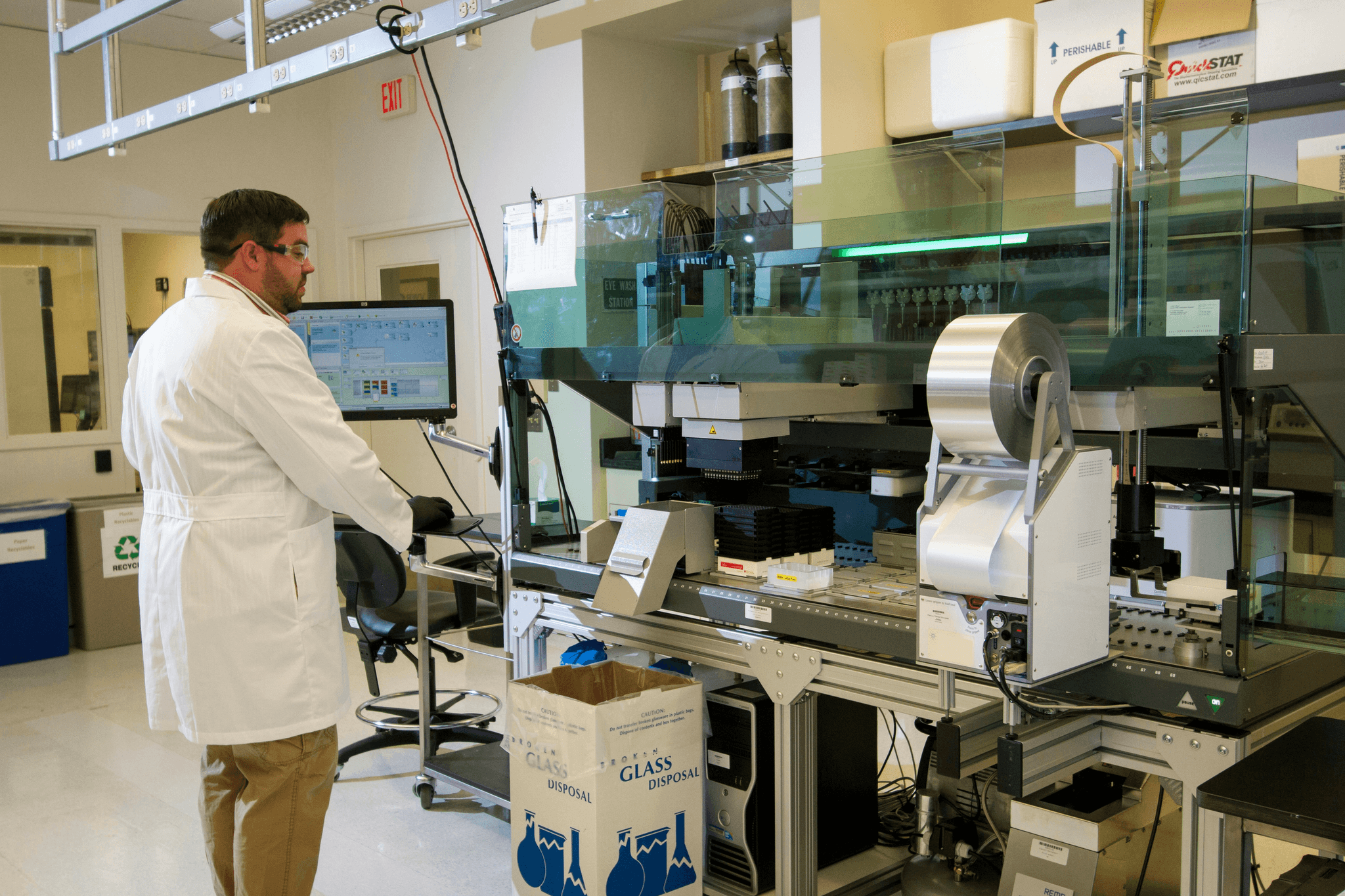Introduction

There are several types of analyses within the realm of chemical testing, each serving distinct purposes yet often overlapping in application. The primary categories include qualitative assessments that reveal what substances are present, alongside quantitative evaluations that provide critical data on how much is there. Additionally, methodologies like Complete Analysis offer an all-encompassing view by integrating various testing approaches to address complex material compositions effectively.
Defining Chemical Testing Analysis
Chemical Testing Analysis is a systematic approach to evaluating the chemical composition and properties of substances. It plays a pivotal role in ensuring product quality, safety, and regulatory compliance across various industries. By employing both qualitative and quantitative analyses, this method provides insights that are crucial for decision-making processes.
What is Chemical Testing Analysis?
At its core, Chemical Testing Analysis involves the examination of materials to identify their chemical makeup and characteristics. This can include anything from determining the presence of trace constituents to performing proximate analysis for food products. The results help industries understand their materials better, leading to improved quality control and enhanced product development.
How It Works in Various Industries
In industries such as pharmaceuticals, food production, and environmental monitoring, Chemical Testing Analysis is indispensable. For instance, pharmaceutical companies utilize quantitative analysis to ensure active ingredients meet required specifications before reaching consumers. Similarly, partial analysis in food testing helps identify contaminants or nutritional content that may affect consumer health.
Key Applications in the Real World
The applications of Chemical Testing Analysis are vast and varied; they touch on everyday life more than we realize. In pharmaceuticals, trace constituent analysis ensures drug safety by identifying any harmful impurities that could jeopardize patient health. Meanwhile, complete analysis in manufacturing guarantees that raw materials meet stringent quality standards before production begins—essentially laying the groundwork for reliable end products.
Qualitative and Quantitative Analyses

In the realm of Chemical Testing Analysis, understanding the differences between qualitative and quantitative analyses is crucial for accurate results. These two methods serve distinct purposes but are equally important in various industries, from pharmaceuticals to food safety. By appreciating their nuances, professionals can ensure comprehensive testing that meets industry standards.
What are Qualitative Analyses?
Qualitative analyses focus on identifying the presence or absence of specific substances within a sample, rather than measuring their exact quantities. This form of analysis is vital in situations where knowing what is there is more critical than knowing how much is present. Techniques such as chromatography and spectroscopy often play a key role in qualitative assessments, helping scientists determine chemical compositions without delving into numerical data.
In Chemical Testing Analysis, qualitative analyses are particularly useful for detecting contaminants or verifying the purity of substances. For instance, in food safety testing, identifying harmful bacteria or toxins can be life-saving. The ability to pinpoint these elements allows industries to take swift action against potential hazards.
Importance of Quantitative Analysis
Quantitative analysis complements qualitative methods by providing precise measurements of chemical constituents within a sample. This type of analysis answers questions like “How much?” and “What concentration?” which are essential for compliance with regulatory standards and ensuring product quality. In sectors such as pharmaceuticals and environmental monitoring, quantitative data can make all the difference between approval and rejection.
The significance of quantitative analysis extends beyond mere numbers; it helps businesses maintain consistency in production processes while adhering to safety regulations. For example, a pharmaceutical company must measure active ingredients accurately to ensure efficacy and safety for consumers—this is where quantitative methods shine brightest. Without this rigorous approach, companies risk producing subpar products that could lead to serious consequences.
How Both Analyses Complement Each Other
Qualitative and quantitative analyses work hand-in-hand within Chemical Testing Analysis to provide a full picture of a sample's composition. While qualitative tests may reveal what compounds are present, quantitative tests will tell us how much exists—together they offer a comprehensive understanding that neither could achieve alone. This synergy enhances decision-making processes across industries by ensuring both safety and quality.
For instance, consider the world of food testing: Qualitative analyses might identify harmful additives while quantitative assessments verify their concentrations against legal limits set by health authorities. The combination ensures not just compliance but also consumer trust—a vital currency in today’s market landscape! In essence, these two types of analyses create a robust framework that supports effective quality control measures across various sectors such as pharmaceuticals with Trace Constituent Analysis or Complete Analysis methodologies.
The Role of Proximate and Partial Analysis
In the realm of Chemical Testing Analysis, proximate and partial analyses play pivotal roles in determining the composition and quality of various substances. These analytical techniques allow industries to ensure that their products meet safety standards and consumer expectations. By understanding these methods, we can appreciate their significance in both food safety and material integrity.
Understanding Proximate Analysis
Proximate analysis is a fundamental technique used to determine the basic composition of a substance, focusing on its major components such as moisture, ash, protein, fat, and carbohydrates. This method provides a quick overview of the nutritional value or quality of food products, making it essential for manufacturers looking to label their goods accurately. By employing qualitative analyses alongside proximate analysis, companies can better understand not only what is present but also how these components interact within the product.
Significance of Partial Analysis
Partial analysis takes a more focused approach by examining specific constituents within a sample rather than providing an overall profile like proximate analysis does. This targeted method is crucial when evaluating particular elements that may affect quality or compliance with regulatory standards. For instance, in Chemical Testing Analysis for pharmaceuticals or food products, partial analysis helps identify contaminants or trace elements that could pose health risks while ensuring that quantitative analysis confirms the overall safety levels.
Practical Applications in Food and Material Testing
The practical applications of proximate and partial analyses are vast across various industries, particularly in food safety testing and material science. In food testing laboratories, these analyses are employed to ensure that products meet nutritional claims and do not contain harmful substances beyond acceptable limits—essential for consumer trust. Similarly, in material testing for construction or manufacturing sectors, these analyses help verify that materials adhere to specified standards for durability and performance through rigorous Chemical Testing Analysis protocols.
Trace Constituent Analysis Explained

Trace constituent analysis is a specialized branch of chemical testing analysis that focuses on identifying and quantifying minute amounts of substances within a sample. It plays a critical role in ensuring the safety and efficacy of products, particularly in industries where even the smallest contaminant can have significant repercussions. By utilizing advanced techniques, trace constituent analysis provides insights that are essential for maintaining high standards across various sectors.
What is Trace Constituent Analysis?
At its core, trace constituent analysis involves the detection and measurement of trace levels of specific chemicals or compounds within a matrix. This process often employs sophisticated methods such as mass spectrometry or gas chromatography, which can detect substances present in concentrations as low as parts per billion (ppb). By focusing on these minute quantities, chemical testing analysis can reveal potential contaminants or verify compliance with regulatory standards.
Importance in Quality Control
Quality control is paramount in industries like pharmaceuticals, where the integrity of products directly impacts consumer health and safety. Trace constituent analysis serves as a vital tool in this arena by ensuring that active ingredients are present at intended levels while confirming that harmful impurities remain below acceptable thresholds. Without rigorous trace constituent analysis, companies risk product recalls, legal liabilities, and damage to their reputation—all outcomes no business wants to face.
Real-world Examples in Pharmaceuticals
In the pharmaceutical industry, trace constituent analysis has proven indispensable for verifying drug purity and potency. For instance, when developing new medications, manufacturers must ensure that no contaminants from raw materials compromise the final product's quality; this is where both qualitative analyses and quantitative analysis come into play to assess ingredient integrity thoroughly. A famous case involved a major pharmaceutical company recalling a batch of medication after trace amounts of an unauthorized compound were detected—underscoring the importance of complete analysis protocols to safeguard public health.
Complete Analysis: A Comprehensive Approach

In the realm of Chemical Testing Analysis, a complete analysis embodies a thorough examination that encompasses various methodologies and techniques tailored to specific needs. This approach integrates both qualitative and quantitative analyses, ensuring that every aspect of the sample is scrutinized. By combining methods such as proximate analysis, partial analysis, and trace constituent analysis, a complete analysis provides a holistic view of the material being tested.
What Constitutes a Complete Analysis?
A complete analysis involves multiple testing strategies that collectively paint an accurate picture of the sample's composition and properties. It typically includes qualitative analyses to identify components present in the sample, alongside quantitative analysis to measure their concentrations accurately. Furthermore, it often incorporates proximate analysis for determining moisture content and nutritional value, partial analysis for specific compounds or contaminants, and trace constituent analysis to detect minute quantities of substances that could impact safety or quality.
Benefits of Comprehensive Testing
The benefits of comprehensive testing in Chemical Testing Analysis are manifold; it enhances accuracy by minimizing the risk of overlooking critical factors that could affect product quality or safety. By employing a combination of qualitative analyses and quantitative methods, industries can ensure compliance with regulations while optimizing processes based on detailed insights gained from proximate and partial analyses. Additionally, this multifaceted approach fosters innovation by identifying new opportunities for improvement through thorough understanding derived from trace constituent analysis.
Case Studies of Effective Complete Analysis
Several case studies illustrate the effectiveness of complete analysis in real-world applications across various industries. For instance, in food safety testing, one company utilized a combination of proximate analysis to assess nutritional content alongside trace constituent analysis to detect harmful additives or contaminants—resulting in enhanced consumer trust and product quality assurance. Another example comes from pharmaceuticals where comprehensive chemical testing revealed previously undetected impurities through partial analyses combined with quantitative assessments—leading to significant improvements in product formulation and regulatory compliance.
Conclusion

In the grand tapestry of industrial processes, Chemical Testing Analysis stands out as a vital thread that ensures safety, quality, and compliance across various sectors. From pharmaceuticals to food production, the significance of both Qualitative Analyses and Quantitative Analysis cannot be overstated; they provide essential insights that help maintain standards and enhance product reliability. As industries evolve, the role of these analytical methods becomes increasingly crucial in navigating complex regulatory landscapes and meeting consumer expectations.
The Crucial Role of Chemical Testing Analysis
Chemical Testing Analysis serves as the backbone for quality assurance in countless industries by providing critical information about material composition and potential contaminants. Techniques like Proximate Analysis and Partial Analysis allow companies to dissect their products down to their core components, ensuring that every ingredient meets stringent safety guidelines. This meticulous attention to detail not only protects consumers but also fortifies brand reputation by fostering trust through transparency.
How Inspection Companies Elevate Standards
Inspection companies play a pivotal role in elevating industry standards by implementing rigorous Chemical Testing Analysis protocols that adhere to best practices. They utilize advanced methodologies such as Trace Constituent Analysis to detect even the minutest impurities in products, thereby safeguarding public health and ensuring regulatory compliance. By championing Complete Analysis strategies, these companies not only enhance product integrity but also set benchmarks for others in the industry to follow.
Future Trends in Chemical Testing Analysis
Looking ahead, the landscape of Chemical Testing Analysis is poised for transformation driven by technological advancements and evolving consumer demands. We can expect an increased integration of automation and artificial intelligence into testing processes, making both Qualitative Analyses and Quantitative Analysis faster and more accurate than ever before. Additionally, with growing emphasis on sustainability, future trends will likely see a rise in eco-friendly testing methods that prioritize environmental responsibility alongside thorough analysis.
